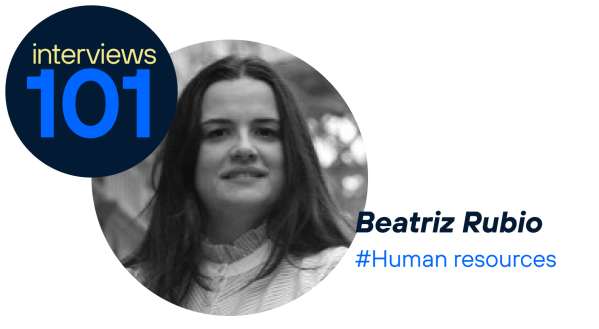Fortunately, nowadays (and in our first world, of course) books are within everyone’s reach. There are books in bookshops, libraries, schools…, but also in second-hand shops, waiting rooms, hairdressers’ shops and even piled up next to rubbish bins. To make matters worse, we have at our disposal a multitude of digital catalogues that include everything from the most recent and alternative novelties to the great classics.
And what happens when something is too accessible? We devalue it.
If anyone can have it, it’s probably not worth much, and that’s why it’s hard for us to pay for it.
Without wishing to offend anyone, I have heard many parents complain about the cost of school books while they painlessly buy video games, “because that’s worth it”.
I’m not excluding myself, it’s happened to all of us at some point: you go into the bookshop, you take a look at a book, you turn it over and wham, twenty euros it costs… We put our hands to our heads and discreetly leave it back on the shelf, thinking of looking for it online or on Wallapop for the more ecologically minded, but have you ever stopped to think about what’s behind those twenty euros? Or rather, who?
Let’s start at the beginning.
How a book is made
Whatever a book is, in paper or digital, the first thing that has to exist for it to exist is an idea and, of course, someone to develop it. Here we have the first link, the writer, who will put all his time, effort, talent, knowledge and research skills into making his dream book a reality. After surely months of racking his brain, he will have in his possession his manuscript, the term we use to refer to the first original draft of a complete work, even if handwriting is just a rhetorical device.
Far from what you might think, our friend the writer has not finished his work, in fact, his adventure has only just begun.
Manuscript in hand and if he is not (yet) a recognised author, he will find himself at a crossroads. “What do I do now?”, he will think, and two main options will open up before him: to become a Juan Palomo (I cook it, I eat it) by launching himself into the exciting world of self-publishing, or to arm himself with patience and faith and send his masterpiece to a publishing house. Actually, there is a third option, which unfortunately is the one chosen on too many occasions, and that is to take the manuscript and stick it in a drawer, analogue or digital, but if I choose to expose this option I will not reach the minimum word count required of me for this blog, so I will go the hard way: our writer decides to publish.
At this point more actors will appear on the scene, which will vary depending on whether you decide to create your book in physical or e-book version, but which will bring a necessary value to the creation process.
First of all, you will need a good spellchecker and proofreader; the credibility of your work depends a lot on this point, and you should not underestimate its importance. Once your text has been corrected, it will have to be laid out, putting everything in its place, thinking about the typographies, the elements of interaction with the reader…
Above all, if you are targeting a children’s or young audience, a good illustrator must come into the picture and, whatever the age of your reader, a good cover design will be fundamental to open doors for you.
Once your book has been illustrated and typeset, you will need a good printer, who will finally make your dream of touching your literary child with your own hands come true, but even at this point, you will still have some way to go. You will need a good promotion of your work, make it known and of course distribute it in all the bookshops and guarantee its availability in the main mass sales channels.
Given all of the above, it is logical that writers think a lot about the best form of publication for their book, as this has changed a lot in recent times, with the democratisation of what was previously only available to a few.
Classic self-publishing, Amazon KDP or traditional publishing?
Like everything in life, each option has its advantages and disadvantages.
If you self-publish on paper you will have control of everything, you will choose from the illustrator to the typeface, the quality of the printing, the weight of the pages, you will know what sells and what doesn’t, you will meet many interesting people and you will learn a lot, I guarantee it, but… you will come up against the difficulty of the promotion, distribution and sale of your book, having to limit yourself to your closest circle or “work very hard” to get your book to reach beyond your province. Oh, and you will also spend a lot of money.
This may sound “old-fashioned” to you, as I’m sure you have a friend or relative, or even yourself, who publishes on Amazon from home at no cost… Well, ahem… this is debatable. If we consider that your work as a writer is worth nothing (think about it), we could say that you publish at no apparent cost, and that you also have a small (very small) profit but… bear in mind that although you will have been provided with shipping and printing, you will have to stick to predefined qualities and that your book will also be one in a million million: unless you dig deep into your pocket, it will be hidden under a huge number of kdp (Amazon Kindle Direct Publishing) authors or similar. And be careful, because, although the big commercial platform will have opened its doors to you, the bookshops will have closed theirs tightly behind you. Again, there is no perfect option.
On the contrary, if a traditional publisher decides to trust you, you will have less control over the production, creation and sales process, but you will have a great friend when it comes to seeing your work fly. This also has its exceptions, because not all publishers are the same, and sometimes it’s better alone than in bad company, but as I’m getting closer to the required word count, I’ll leave that topic for another article.
And of course, within both options, we can also decide whether we want our book in physical or digital format, or both, for which we will also have to assess the benefits and disadvantages of reading on screens vs. paper.
To recapitulate, whatever the choice when it comes to publishing, we have talked about: writer, proofreader, layout artist, illustrator, graphic designer, publicist, printing press operator, loader, distribution manager, messenger, bookseller… and more. All these people work to make a book a reality, they all get paid for their work and they all have a family to support and a life to live. Do you think that with the twenty euros they will have enough for everyone?
Now, every time you enter a bookshop or website and you have a book in your hands or basket, remember me and pay for it with pleasure, because, although the benefits of reading it are priceless, the work of the professionals who make it possible is.







